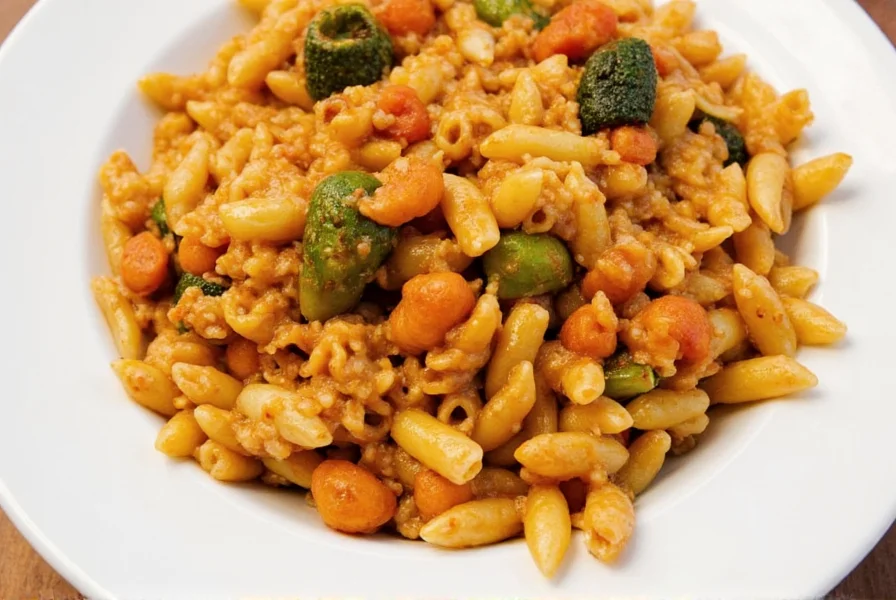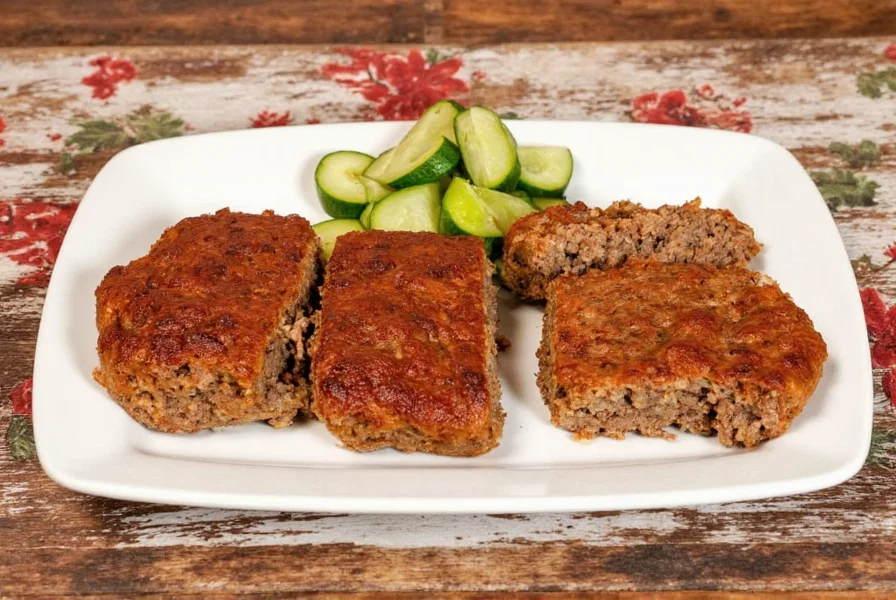
Welcome, spice enthusiasts and culinary adventurers! Today, we're diving deep into the fragrant world of flavor by exploring how to elevate your pasta sauce roasted vegetables game using spices like a pro. Whether you're a seasoned home cook or just getting comfortable in the kitchen, this guide will turn your basic veggie pasta dish into a flavor-packed masterpiece.
Table of Contents
- Introduction: Why Roast?
- Spice Basics for Veggie Pasta
- Top 7 Spice Tips for Roasted Vegetable Pasta
- Best Spice Pairings for Common Roasted Veggies
- Buying Guide: Must-Have Spice Tools
- Simple Recipe: Garlic & Herb Roasted Veggie Pasta
- Conclusion: From Good to Great in One Sprinkle
Introduction: Why Roast?
Roasting is one of the most magical techniques in the culinary world when it comes to vegetables. The dry heat caramelizes natural sugars, intensifies flavors, and creates a depth that’s hard to achieve through boiling or steaming. When combined with the right spices and tossed into a rich pasta sauce, roasted veggies can become the star of your plate instead of just a sidekick.
So whether you're going meatless for a night or simply trying to sneak more produce onto your plate, mastering the art of spiced-up pasta sauce roasted vegetables can be your new go-to strategy.
Spice Basics for Veggie Pasta
Before we dive into the specific tips, let's review some foundational concepts about spices in pasta dishes:
- Bold vs. Delicate: Roasted vegetables tend to have robust flavors, so don't shy away from strong spices like smoked paprika, cumin, or coriander.
- Fat is Your Friend: Oils carry flavors well. Tossing vegetables in oil before roasting helps spices stick and infuse better.
- Layering Flavors: Don’t just sprinkle spices once—layer them before, during, and after roasting for maximum impact.
- Aromatics Matter: Herbs like rosemary, thyme, and basil release their best aromas when exposed to heat slowly.
Top 7 Spice Tips for Roasted Vegetable Pasta

- Use Freshly Ground Spices: Whole spices (like peppercorns, cumin seeds) ground at home offer brighter, more potent flavors than pre-ground versions.
- Toast First: Lightly toasting whole spices like fennel seeds or coriander seeds in a dry pan before grinding unlocks deeper flavors.
- Rub It In: Massage the spice-oil mixture into the vegetables before roasting—this ensures even coverage and absorption.
- Add Midway Through Roasting: For delicate herbs like oregano or thyme leaves, sprinkle halfway through cooking to prevent burning.
- Finish With Freshness: Finish off your pasta with chopped fresh parsley, basil, or chives to brighten up the earthy roasted notes.
- Try Global Twists: Experiment with za’atar for Mediterranean flair, garam masala for Indian-inspired warmth, or chili flakes for an Asian kick.
- Don’t Forget Salt!: Use coarse sea salt or kosher salt for seasoning. Add a pinch at the beginning and adjust at the end for balance.
Best Spice Pairings for Common Roasted Veggies
Not all vegetables are created equal when it comes to spice pairing. Here's a quick reference table to help you pick the perfect match:
| Vegetable | Best Spices | Why It Works |
|---|---|---|
| Zucchini | Parsley, Lemon Zest, Red Pepper Flakes | Light and slightly bitter—needs brightness and a touch of heat |
| Eggplant | Cumin, Smoked Paprika, Thyme | Dense and meaty—loves bold, earthy spices |
| Carrots | Ginger, Cinnamon, Allspice | Naturally sweet—enhanced by warm spices |
| Red Bell Peppers | Oregano, Basil, Crushed Garlic | Already sweet and smoky—complements Italian-style sauces |
| Brussels Sprouts | Black Pepper, Parmesan, Nutmeg | Bitter and dense—needs sharp and creamy contrast |
Buying Guide: Must-Have Spice Tools
If you're serious about mastering pasta sauce roasted vegetables, investing in the right tools can make a huge difference. Here are five essential spice-related products you should consider adding to your kitchen arsenal:
- Mortar and Pestle
- Features: Traditional tool for grinding spices by hand
- Advantages: Releases oils and enhances aroma; great for small batches
- Use Cases: Ideal for making pastes, rubs, or enhancing blends
- Target Audience: Home cooks and spice lovers who enjoy hands-on prep
- Suitable Occasions: Weekends, meal prep days, or dinner parties
- Manual Spice Grinder
- Features: Compact, easy-to-use device for grinding whole spices
- Advantages: Affordable alternative to electric grinders
- Use Cases: Everyday use for freshly ground pepper, cumin, etc.
- Target Audience: Casual cooks and beginners
- Suitable Occasions: Quick meals, weeknight dinners
- Cast Iron Skillet (for Toasting)
- Features: Heavy, durable, excellent heat retention
- Advantages: Perfect for toasting spices without scorching
- Use Cases: Toasting cumin, coriander, mustard seeds
- Target Audience: Serious home cooks and spice experimenters
- Suitable Occasions: Cooking projects requiring depth of flavor
- Spice Storage Jars
- Features: Airtight glass jars with labels
- Advantages: Keeps spices fresher longer, prevents moisture damage
- Use Cases: Storing homemade spice blends or purchased spices
- Target Audience: Anyone wanting to organize their pantry
- Suitable Occasions: Anytime you buy new spices
- Herb Stripper Tool
- Features: Small plastic tool with holes for stripping leaves
- Advantages: Makes herb prep fast and effortless
- Use Cases: Prepping rosemary, thyme, sage, or mint
- Target Audience: Those who cook with fresh herbs often
- Suitable Occasions: Weekend cooking, garden harvests
Simple Recipe: Garlic & Herb Roasted Veggie Pasta
Ready to put all these spice tips into practice? Try this easy, flavorful recipe:
Ingredients
- 1 zucchini
- 1 red bell pepper
- 1 eggplant
- 1 cup cherry tomatoes
- 3 tbsp olive oil
- 2 cloves garlic, minced
- 1 tsp dried oregano
- ½ tsp smoked paprika
- Salt and black pepper to taste
- 8 oz spaghetti or penne pasta
- ¼ cup grated Parmesan (optional)
- Fresh basil or parsley for garnish
Instructions
- Preheat oven to 400°F (200°C).
- Chop vegetables into bite-sized pieces and toss with olive oil, garlic, oregano, paprika, salt, and pepper.
- Spread evenly on a baking sheet and roast for 25–30 minutes until tender and slightly browned.
- Cook pasta according to package instructions and drain.
- Toss hot pasta with roasted vegetables. Add a splash of pasta water if needed to loosen the sauce.
- Top with Parmesan and fresh herbs before serving.
Conclusion: From Good to Great in One Sprinkle
Mastering pasta sauce roasted vegetables isn't just about technique—it's about understanding how spices interact with texture, heat, and time. By applying a few simple spice strategies, you can transform your humble bowl of veggies into a vibrant, aromatic feast that sings with flavor.
Remember, spices are like music notes—you don’t need many to create something beautiful, but the right ones at the right time can make all the difference. So don’t be afraid to experiment, explore, and most importantly, taste as you go!
Whether you're feeding a family, impressing guests, or enjoying a cozy night in, spicing up your roasted veggie pasta is a delicious skill worth cultivating. Now go ahead, season boldly, and let your flavors shine!










 浙公网安备
33010002000092号
浙公网安备
33010002000092号 浙B2-20120091-4
浙B2-20120091-4